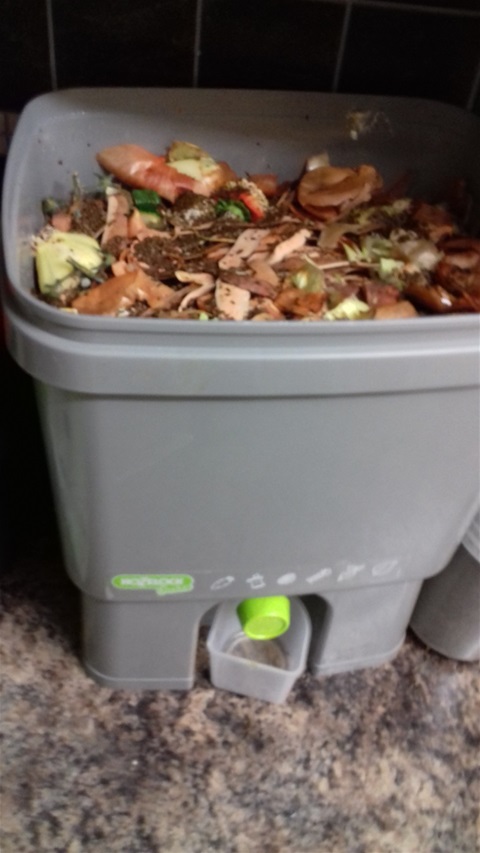Bokashi: Composting the pre-compost
Bokashi converts cooked food waste into a form which can be added to the compost bin or buried in the garden without attracting vermin
As a composter I add the pre-compost produced by the Bokashi bin to my compost bins. This achieves the original objective of converting cooked food waste into a form that can be used as a soil improver at home in a without attracting vermin. I prefer this to burying the pre-compost directly in the soil as I use my Bokashi at home and having limited space do not have room for a trench and I lose track of the location of the places where I have buried material when post hole composting However, many will prefer to add the pre-compost directly to the soil making it available to the growing plants sooner, avoids double handing the material and reduces the risk of the addition of small amounts of greenhouses gases to the atmosphere if the aerobic composting bin has anaerobic areas.
On completion of the formation process the appearance of the food waste will have changed very little in appearance but do not worry the organisms in the Bokashi bran will have done their work enabling micro-organisms in the compost bin or soil to break the product down quickly without attracting the attention of rats or other vermin.
Adding Bokashi pre-compost to the compost bin or wormery.
When adding the Bokashi pre-compost to an aerobic composting bin or wormery will mean that the anaerobes responsible for fermenting the waste will be replaced by aerobic microbes
Adding to a compost bin
Most people who have a conventional compost bin will add the pre-compost to the working compost bin. If a plastic coned shaped bin is being used to cold compost the normal household and garden waste some will just aerate the material in the bin using a compost aerator or spade and empty the Bokashi into the bin. It is then mixed with a couple of spades of fresh soil the upper layers of the bin are turned so that the pre-compost is both well mixed the existing ingredients and buried. Some just tip the pre-compost into the bin and continue to add normal greens and browns with the minimum of mixing (I have not tried this). If using a New Zealand bin where the contents are not turned, I mix the pre-compost with soil before adding it as a layer to the bin. If hot composting where contents are being turned for the first month the pre-compost can be added as a separate layer followed by a soil layer and then alternative layers of greens and browns.
Wormeries
Bokashi pre-compost can be added to a wormery allowing meat and other items that are unsuitable for vermicomposting without pre-treated to be processed. Bokashi fermentation is an acidic process and while it can provide an effective means of completing the processing of kitchen waste the addition of acidic bokashi pre-compost to a worm bin must be done with care as worms prefer a neutral pH and the bokashi material will normally have a pH of 3-4.
The bokashi pre-compost should be introduced to the wormery in relatively small amounts over several days together with additional Browns. This allows the worms to adjust to the new material, once they do so they will process it more quickly down material that has not be pre-treated in the Bokashi bin. It is likely that if Bokashi material is added regularly it will increase the acidity of the worm bin so the pH should be monitored, and additional lime added. The worm bin should be carefully monitored over the period the Bokashi pre-compost is being added. Initially only add a small amount of pre-compost to the bin increasing the dose as the worms adjust to the more acidic pH. Add shredded paper or other source of carbon when adding the pre-compost to maintain the C:N ratio and check the pH adding lime if the bedding becomes acidic.
In the next post I will look at burying the pre-compost directly in the soil using a trench or post hole. Details are available at http://www.carryoncomposting.com/416920212

Latest comments
Do you have any data on ' application ' of Aerated Vermi Compost Tea to Mangoes and benneficial outcomes .
Very informative site. Having been away for 5 weeks and returning to evidence of rats under and around the compost bin, I can testify to lack of human activity allowing the rats to get comfortable.
can i use dog manure in compost and mulching leaves?
What is the C and N ratio for coffee chaff?